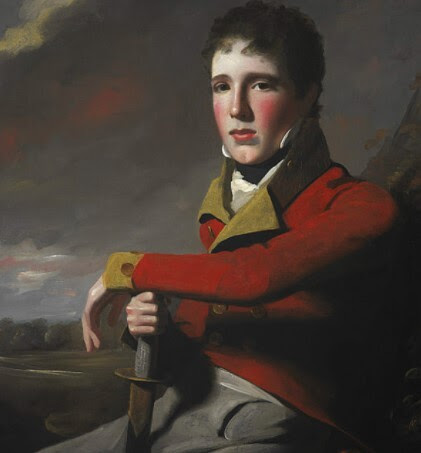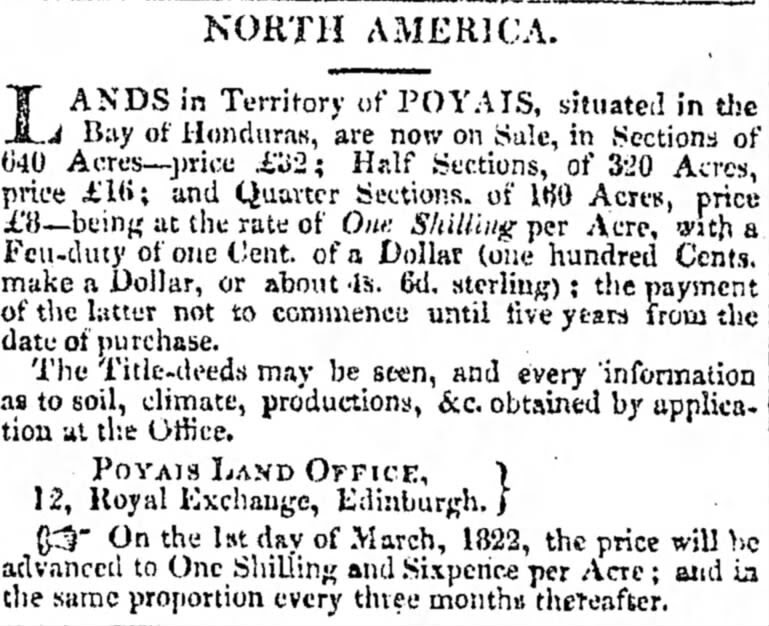22 Jan Discover my family tree- January 22, 2022
Contents

THE CON ARTIST WHO SOLD RICH INVESTORS A COUNTRY
Nearly 200 years ago, Gregor MacGregor pulled off one of the most brazen real estate scams in history.




BRITISH FLORIDA
The 1763 Treaty of Paris, signed after Great Britain’s victory over France and Spain during the Seven Years’ War, ceded Florida to Great Britain in exchange for the return of Havana and Manila. Although most Spanish colonists in the region left Florida for Cuba, Florida became Great Britain’s fourteenth and fifteenth North American colonies (West and East Florida). Because of the political sympathies of its British inhabitants, St. Augustine became a Loyalist haven during the American Revolutionary War.
After the mass exodus of St. Augustinians, Great Britain sought to repopulate its new colony. The London Board of Trade advertised 20,000-acre lots to any group that would settle in Florida within ten years, with one resident per 100 acres. Pioneers who were “energetic and of good character” were given 100 acres of land and 50 additional acres for each family member they brought. Under Governor James Grant, almost three million acres of land were granted in East Florida alone. Second stories were added to existing Spanish homes, and they built new houses. Cattle ranching and plantation agriculture began to thrive.
During the twenty years of British rule, Britain took command of the Castillo de San Marcos (renamed Fort St. Mark) and Fort Matanzas. They permanently stationed a small group of men at Fort Matanzas. Once war broke out, loyalist St. Augustine residents burned effigies of Patriots Samuel Adams and John Hancock in the plaza. Fort St. Mark became a training and supply base and a prisoner-of-war camp where three signers of the Declaration of Independence and South Carolina’s lieutenant governor Christopher Gadsden were held. Local militia composed of Florida, Georgia, and Carolina inhabitants formed the East Florida Rangers in 1776 and were reorganized to form the King’s Rangers in 1779. Spanish General Bernardo de Gálvez harassed the British in West Florida and captured Pensacola. However, fears that the Spanish would then move to capture St. Augustine proved unfounded.
The 1783 Treaty of Paris, which recognized the independence of the Thirteen Colonies as the United States, ceded Florida back to Spain and returned the Bahamas to Britain. As a result, some of the town’s Spanish residents returned to St Augustine. Refugees from Dr. Andrew Turnbull’s troubled colony in New Smyrna had fled to St. Augustine in 1777, made up the majority of the city’s population during the period of British rule, and remained when the Spanish Crown retook control. This group was referred to locally as “Menorcans,” even though it also included settlers from Italy, Corsica, and the Greek islands.
FROM THE BALTIC TO THE MISSISSIPPI
 In 1710, Sweden lost Swedish Livonia, Swedish Estonia and Ingria to Russia almost 100 years later, by the Capitulation of Estonia and Livonia. The loss was cemented by 1721 the Treaty of Nystad. Charles Fred D’Arensbourg emigrated to Louisiana in 1721 with thirty officers. They would rather move to Louisiana, instead of living as Russians.
In 1710, Sweden lost Swedish Livonia, Swedish Estonia and Ingria to Russia almost 100 years later, by the Capitulation of Estonia and Livonia. The loss was cemented by 1721 the Treaty of Nystad. Charles Fred D’Arensbourg emigrated to Louisiana in 1721 with thirty officers. They would rather move to Louisiana, instead of living as Russians.
THE ENTERTAINING PATRIOT
 During the American Revolution, when retreating from New York, Major General Putnam, at the head of three thousand five hundred continental troops, was in the rear and the last that left the city. To avoid any of the enemies that might be advancing in the direct road to the town, he chose a road parallel with and contiguous to the North River, till he could arrive at a certain angle, whence another road would conduct him in such a direction as that he might form a junction with our army. It so happened that a body of about eight thousand British and Hessians was at the exact moment advancing on the road, which would have brought them in immediate contact with General Putnam before he could have reached the turn into the other route. Most, fortunately, the British generals, seeing no prospect of engaging our troops, halted their own, and repaired to the house of a Mr. Robert Murray, a Quaker and friend of our cause; Mrs. Murray treated them with cake and wine, and they were induced to tarry two hours or more, Governor Tryon frequently joking her about her American friends. By this happy incident General Putnam, by continuing his march, escaped a rencounter with a greatly superior force, which must have proved fatal to his whole party. One-half hour, it is said, would have been sufficient for the enemy to have secured the road at the turn and entirely cut off General Putnam s retreat. Since then, it has become almost a common saying among our officers that Mrs. Murray saved this part of the American army.
During the American Revolution, when retreating from New York, Major General Putnam, at the head of three thousand five hundred continental troops, was in the rear and the last that left the city. To avoid any of the enemies that might be advancing in the direct road to the town, he chose a road parallel with and contiguous to the North River, till he could arrive at a certain angle, whence another road would conduct him in such a direction as that he might form a junction with our army. It so happened that a body of about eight thousand British and Hessians was at the exact moment advancing on the road, which would have brought them in immediate contact with General Putnam before he could have reached the turn into the other route. Most, fortunately, the British generals, seeing no prospect of engaging our troops, halted their own, and repaired to the house of a Mr. Robert Murray, a Quaker and friend of our cause; Mrs. Murray treated them with cake and wine, and they were induced to tarry two hours or more, Governor Tryon frequently joking her about her American friends. By this happy incident General Putnam, by continuing his march, escaped a rencounter with a greatly superior force, which must have proved fatal to his whole party. One-half hour, it is said, would have been sufficient for the enemy to have secured the road at the turn and entirely cut off General Putnam s retreat. Since then, it has become almost a common saying among our officers that Mrs. Murray saved this part of the American army.

